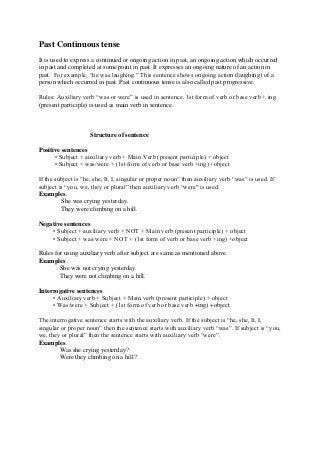Recommended
More Related Content
Featured
Featured (20)
Product Design Trends in 2024 | Teenage Engineerings

Product Design Trends in 2024 | Teenage Engineerings
How Race, Age and Gender Shape Attitudes Towards Mental Health

How Race, Age and Gender Shape Attitudes Towards Mental Health
AI Trends in Creative Operations 2024 by Artwork Flow.pdf

AI Trends in Creative Operations 2024 by Artwork Flow.pdf
Content Methodology: A Best Practices Report (Webinar)

Content Methodology: A Best Practices Report (Webinar)
How to Prepare For a Successful Job Search for 2024

How to Prepare For a Successful Job Search for 2024
Social Media Marketing Trends 2024 // The Global Indie Insights

Social Media Marketing Trends 2024 // The Global Indie Insights
Trends In Paid Search: Navigating The Digital Landscape In 2024

Trends In Paid Search: Navigating The Digital Landscape In 2024
5 Public speaking tips from TED - Visualized summary

5 Public speaking tips from TED - Visualized summary
Google's Just Not That Into You: Understanding Core Updates & Search Intent

Google's Just Not That Into You: Understanding Core Updates & Search Intent
The six step guide to practical project management

The six step guide to practical project management
Beginners Guide to TikTok for Search - Rachel Pearson - We are Tilt __ Bright...

Beginners Guide to TikTok for Search - Rachel Pearson - We are Tilt __ Bright...
Unlocking the Power of ChatGPT and AI in Testing - A Real-World Look, present...

Unlocking the Power of ChatGPT and AI in Testing - A Real-World Look, present...
Past continuous tense
- 1. Past Continuous tense It is used to express a continued or ongoing action in past, an ongoing action which occurred in past and completed at some point in past. It expresses an ongoing nature of an action in past. For example, “he was laughing.” This sentence shows ongoing action (laughing) of a person which occurred in past. Past continuous tense is also called past progressive. Rules: Auxiliary verb “was or were” is used in sentence. 1st form of verb or base verb + ing (present participle) is used as main verb in sentence. Structure of sentence Positive sentences • Subject + auxiliary verb + Main Verb (present participle) + object • Subject + was/were + (1st form of verb or base verb +ing) +object If the subject is “he, she, It, I, singular or proper noun” then auxiliary verb “was” is used. If subject is “you, we, they or plural” then auxiliary verb “were” is used. Examples. She was crying yesterday. They were climbing on a hill. Negative sentences • Subject + auxiliary verb + NOT + Main verb (present participle) + object • Subject + was/were + NOT + (1st form of verb or base verb +ing) +object Rules for using auxiliary verb after subject are same as mentioned above. Examples. She was not crying yesterday. They were not climbing on a hill. Interrogative sentences • Auxiliary verb + Subject + Main verb (present participle) + object • Was/were + Subject + (1st form of verb or base verb +ing) +object The interrogative sentence starts with the auxiliary verb. If the subject is “he, she, It, I, singular or proper noun” then the sentence starts with auxiliary verb “was”. If subject is “you, we, they or plural” then the sentence starts with auxiliary verb “were”. Examples. Was she crying yesterday? Were they climbing on a hill?
- 2. More Examples Positive sentences They were laughing at the joker. He was taking exam last month You waiting for him yesterday She was working in a factory. It was raining yesterday. Negative sentences They were not laughing at the joker. He was not taking exam last month You were not waiting for him yesterday She was not working in a factory. It was not raining yesterday. Interrogative sentences Were they laughing at the joker? Was he taking exam last month? Were you waiting for him yesterday? Was she working in a factory? Was it raining yesterday? Penggunaan dan Contoh Past Continuous Tense Beberapa penggunaan dan contoh past continuous tense adalah sebagai berikut. Fungsi Contoh Past Continuous Tense Past continuous tense untuk mengindikasikan suatu aksi yang terjadi selama momen tertentu di masa lampau. I was shopping at this time yesterday. (Saya sedang belanja pada jam ini kemarin.) What was she doing at 5 am this morning? (Apa yang sedang dia lakukan jam 5 pagi ini?) They were roasting corn at this time last night. (Mereka sedang membakar jagung pada jam ini kemarin malam.) I was doing physically exercises all day yesterday. (Saya sedang melakukan latihan-latihan fisik sepanjang hari kemarin.) Untuk menunjukkan bahwa ada aksi berdurasi pendek (simple past tense) yang terjadi ketika suatu aksi berdurasi panjang (past continuous tense) sedang berlangsung. She was sleeping when you called her. (Dia sedang tidur ketika kamu meneleponnya.) The door was knocked while I was studying. (Pintu diketuk ketika saya sedang belajar.)
- 3. Past continuous tense digunakan untuk mengolok-olok atau mengkritik aksi yang terjadi pada interval acak namun sebenarnya merupakan kebiasaan alami. The girl was always yelling out loud. (Anak itu selalu menjerit keras-keras.) My neighbor was always chasing stray cats off with his broom. (Tetangga saya selalu mengusir kucing-kucing liar dengan sapunya.)
